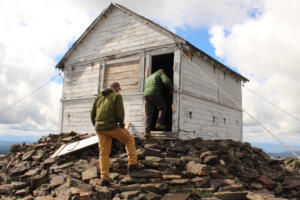By mid-September, there was no one left to call. The West, with its thousands of federal, state and local fire engines and crews, had been tapped out.
Wildfires across the West had consumed the labor of all available wildland firefighters, and though there were fewer fires burning, those fires were larger and more difficult to contain. They consumed 13 million acres — an area almost the size of West Virginia.
In the midst of the 2020 wildfire season, John Phipps, the Forest Service’s deputy chief, told Congress that this “was an extraordinary year and it broke the system. The system was not designed to handle this.”
Draining the national wildland firefighting pool was why my fire crew and I had to work longer and harder than usual on the Idaho-Oregon border. We were fighting the Woodhead fire, which had peaked at 85,000 acres and threatened to burn the developed areas around the towns of Cambridge and Council, Idaho.
With only three crews to try to contain a fire that required probably ten crews, it meant day and night shifts for 14 days. Each crew found itself with miles of fire line to construct and hold. With not enough person-power, we were always trying to do more with less, and it was no comfort to know that what we faced was not unique.

